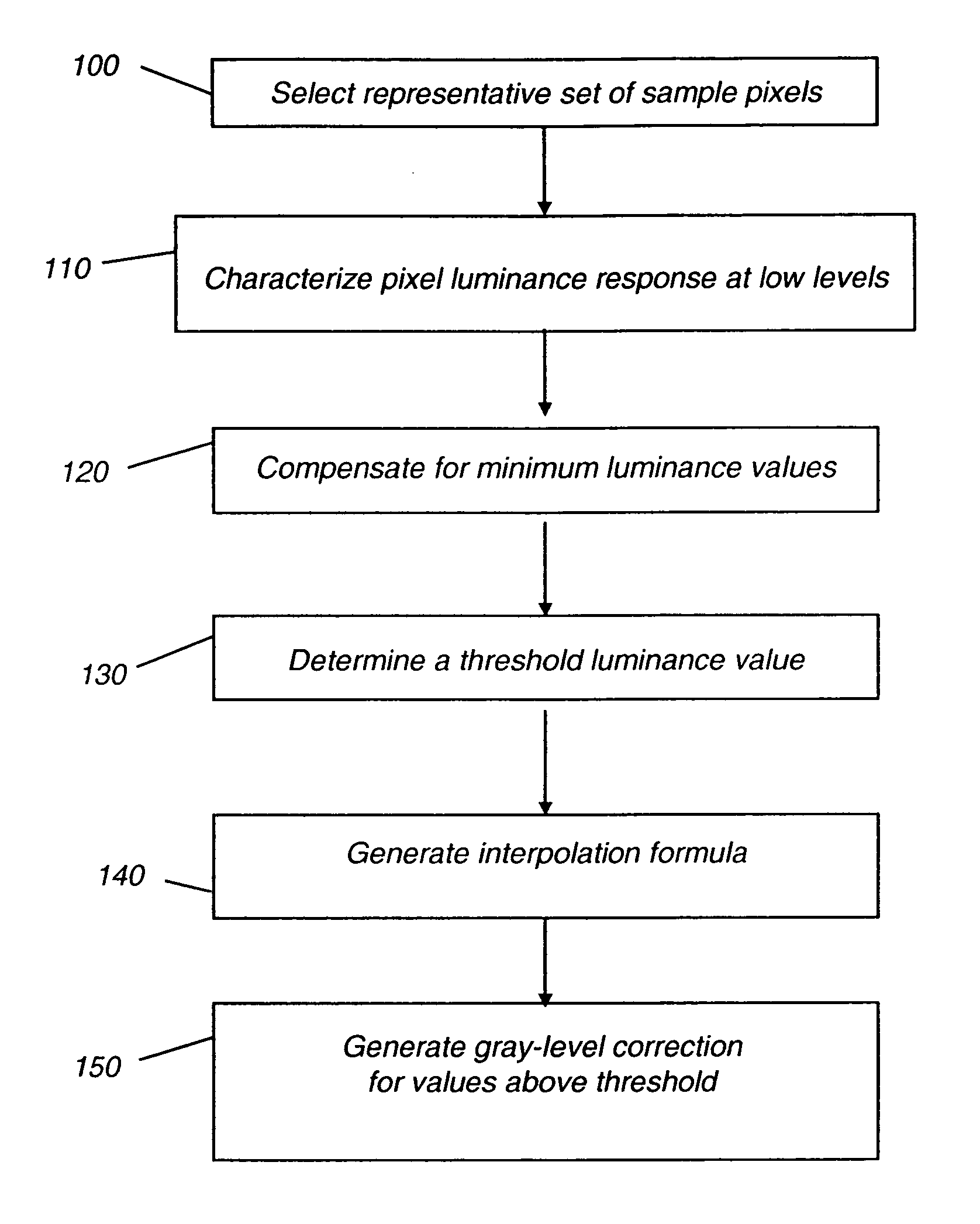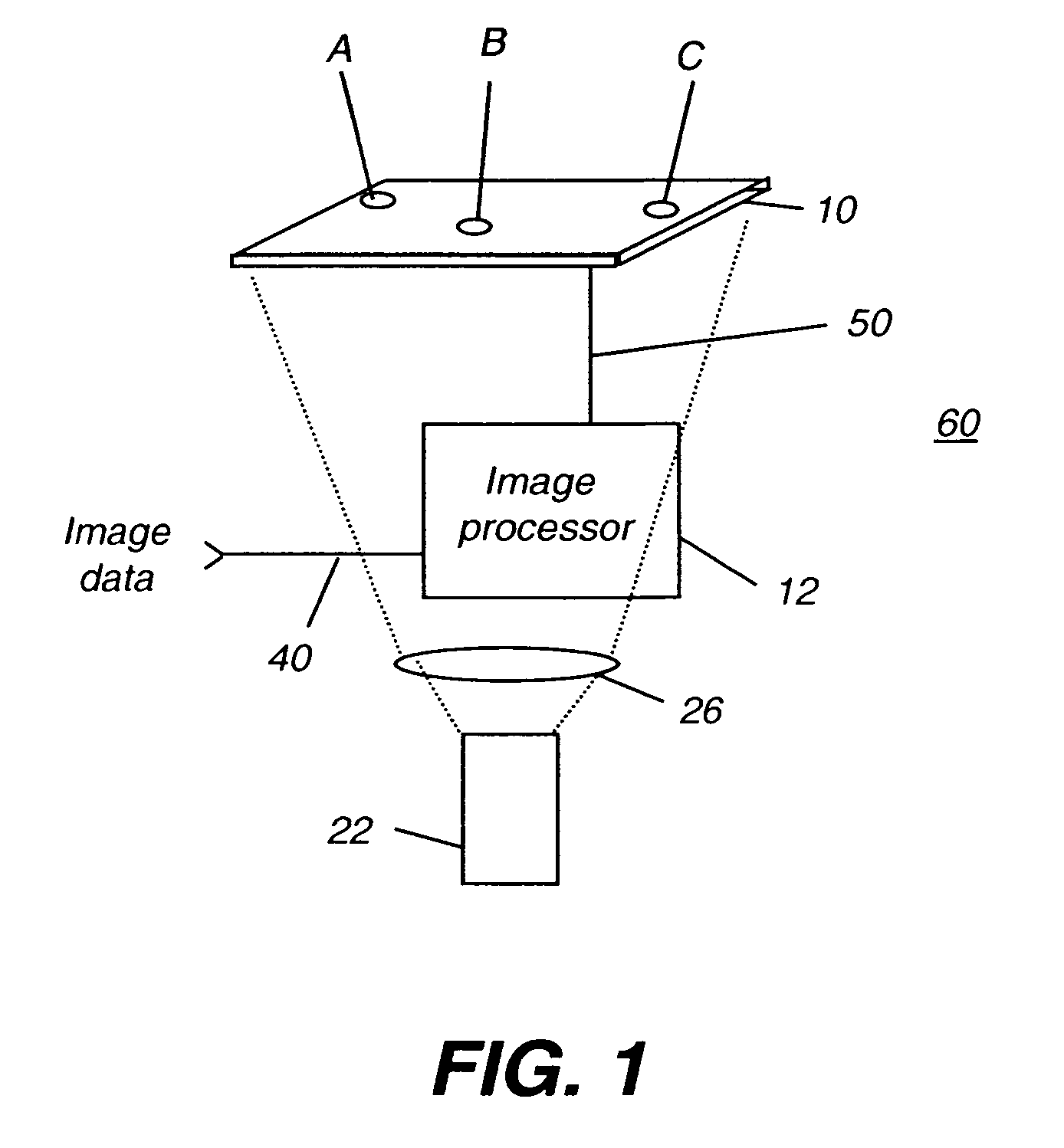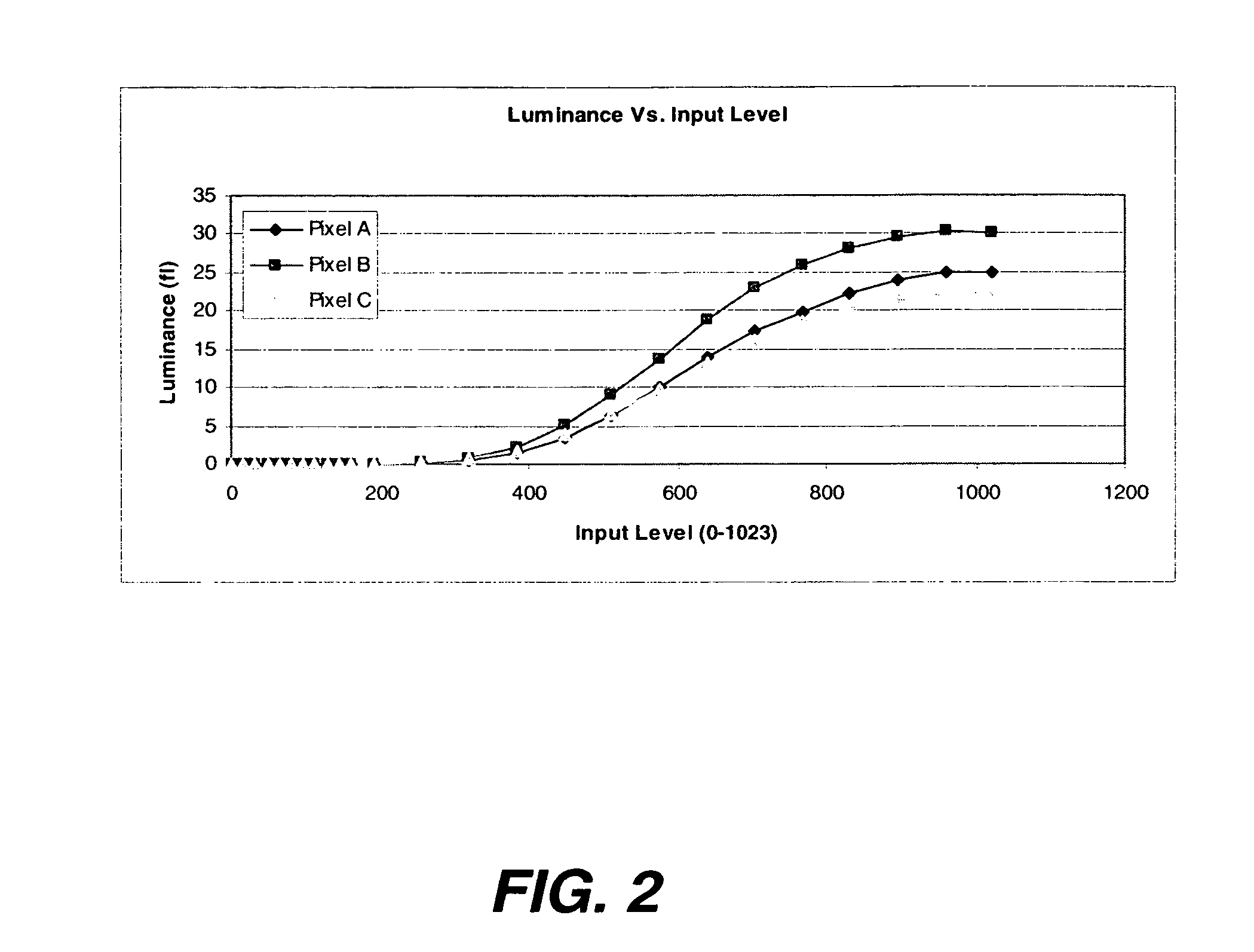Black level uniformity correction method
a correction method and black level technology, applied in the field of image processing, can solve problems such as non-uniform luminance, non-uniform luminance, and undesirable shifts in tint and shading
- Summary
- Abstract
- Description
- Claims
- Application Information
AI Technical Summary
Benefits of technology
Problems solved by technology
Method used
Image
Examples
example values
[0082] The tables of FIGS. 9, 10, and 11 give example numerical values for pixels 1, 2, and 3 in the graph of FIG. 7, respectively. For each pixel, the black level correction value and threshold value 16 are identified, with equations used to obtain the actual values used according to the present invention.
[0083] Taking the example of FIG. 9, the black level code value is 100. With reference again to FIG. 1, this means that when original code value 40 is 0, indicating the minimum luminance level or black level, image processor 12 transforms this value to provide a conditioned code value 50 of 100. With reference to FIG. 7, threshold value 16 is set at 128. Interpolation zone 18, then, applies for original code values 40 ranging from 1 to 127. Image processor 12 transforms these values to provide conditioned code values 50 calculating, for this example:
Round(100+92*(145−100) / (128−0))
Thus, image processor 12 transforms an original code value 40 of 64 to provide a conditioned code ...
PUM
 Login to View More
Login to View More Abstract
Description
Claims
Application Information
 Login to View More
Login to View More - R&D
- Intellectual Property
- Life Sciences
- Materials
- Tech Scout
- Unparalleled Data Quality
- Higher Quality Content
- 60% Fewer Hallucinations
Browse by: Latest US Patents, China's latest patents, Technical Efficacy Thesaurus, Application Domain, Technology Topic, Popular Technical Reports.
© 2025 PatSnap. All rights reserved.Legal|Privacy policy|Modern Slavery Act Transparency Statement|Sitemap|About US| Contact US: help@patsnap.com



